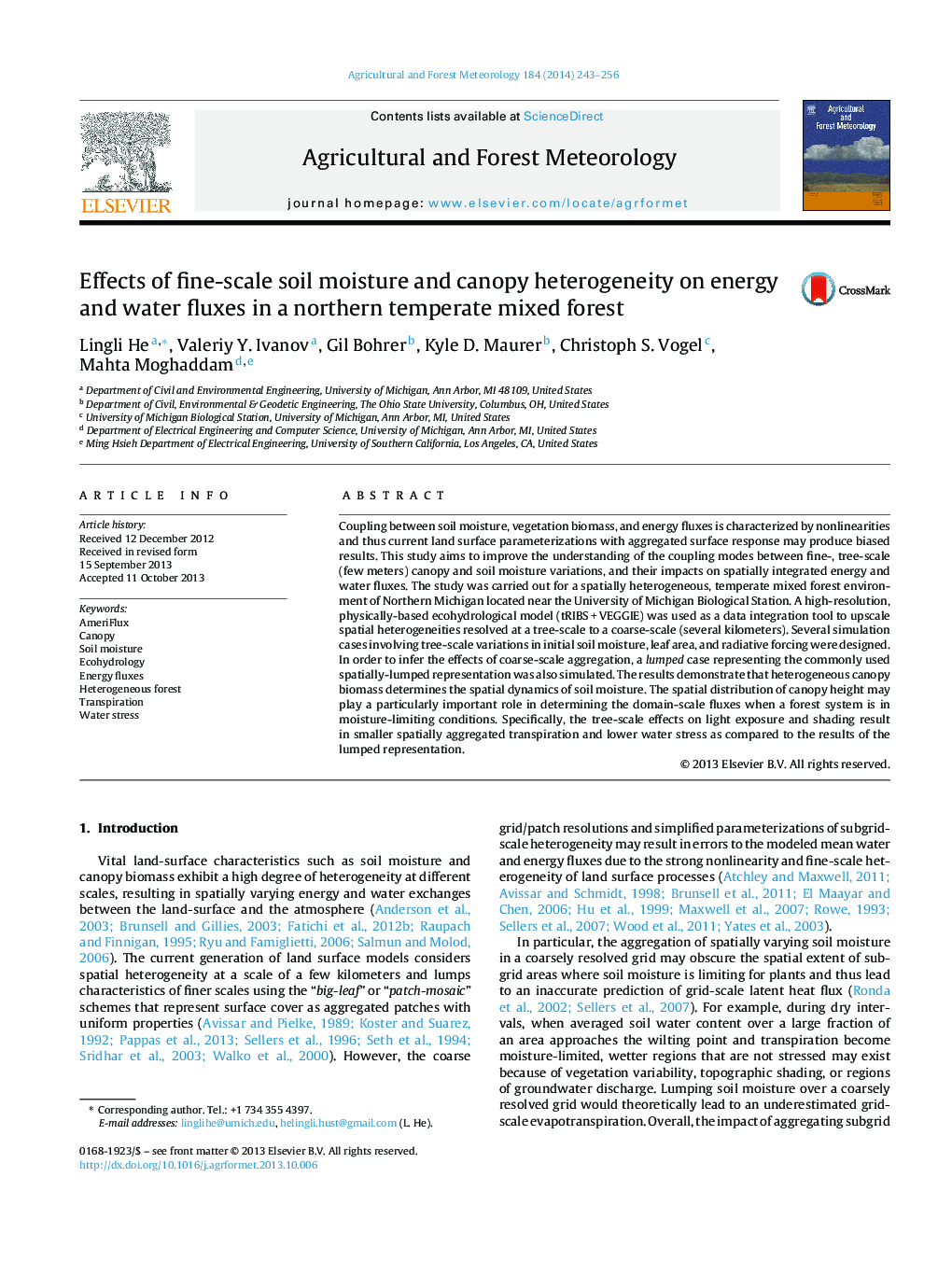| Article ID | Journal | Published Year | Pages | File Type |
|---|---|---|---|---|
| 6537711 | Agricultural and Forest Meteorology | 2014 | 14 Pages |
Abstract
Coupling between soil moisture, vegetation biomass, and energy fluxes is characterized by nonlinearities and thus current land surface parameterizations with aggregated surface response may produce biased results. This study aims to improve the understanding of the coupling modes between fine-, tree-scale (few meters) canopy and soil moisture variations, and their impacts on spatially integrated energy and water fluxes. The study was carried out for a spatially heterogeneous, temperate mixed forest environment of Northern Michigan located near the University of Michigan Biological Station. A high-resolution, physically-based ecohydrological model (tRIBSÂ +Â VEGGIE) was used as a data integration tool to upscale spatial heterogeneities resolved at a tree-scale to a coarse-scale (several kilometers). Several simulation cases involving tree-scale variations in initial soil moisture, leaf area, and radiative forcing were designed. In order to infer the effects of coarse-scale aggregation, a lumped case representing the commonly used spatially-lumped representation was also simulated. The results demonstrate that heterogeneous canopy biomass determines the spatial dynamics of soil moisture. The spatial distribution of canopy height may play a particularly important role in determining the domain-scale fluxes when a forest system is in moisture-limiting conditions. Specifically, the tree-scale effects on light exposure and shading result in smaller spatially aggregated transpiration and lower water stress as compared to the results of the lumped representation.
Related Topics
Physical Sciences and Engineering
Earth and Planetary Sciences
Atmospheric Science
Authors
Lingli He, Valeriy Y. Ivanov, Gil Bohrer, Kyle D. Maurer, Christoph S. Vogel, Mahta Moghaddam,
